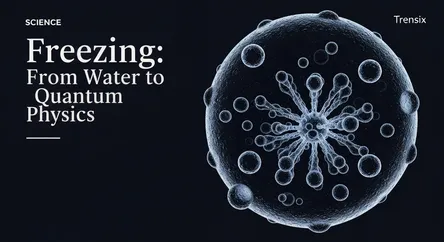Science
Freezing: From Water to Quantum Physics

An explanation of freezing, the process of turning liquid to solid, and why it's a hot topic in fields from quantum computing to food preservation.
What is it?
Freezing is a phase transition where a liquid turns into a solid. This occurs when the temperature of a liquid is lowered to its freezing point, causing its molecules to lose energy and slow down. As they slow, the attractions between the molecules cause them to arrange themselves into fixed positions, forming a crystalline solid. This process is almost always exothermic, meaning heat is released as the liquid solidifies. While water's freezing point is 0°C (32°F), different substances freeze at different temperatures due to their unique molecular structures.
Why is it trending?
The concept of freezing is trending due to groundbreaking scientific research. Physicists have recently made headlines for "freezing" light, forcing it into a "supersolid" state that is both solid and fluid. This breakthrough could revolutionize quantum computing by creating more stable processing units. Furthermore, the field of cryonics, or freezing human bodies with the hope of future revival, continues to capture public imagination and drive research in cryobiology. Studies into how organisms survive freezing temperatures have implications for medicine, agriculture, and conservation.
How does it affect people?
Freezing has a significant impact on daily life. It is a primary method for food preservation, slowing spoilage by making water unavailable to microbes. In nature, the expansion of freezing water causes frost weathering on rocks and can damage roads and building foundations. Freezing temperatures can also permanently damage personal electronics by draining batteries and shattering screens. In medicine, cryopreservation is used to store blood cells, embryos, and tissues for future use. The more speculative field of cryonics offers to freeze legally deceased people for potential reanimation with future technology.